Academics, sound science, and no shortcuts
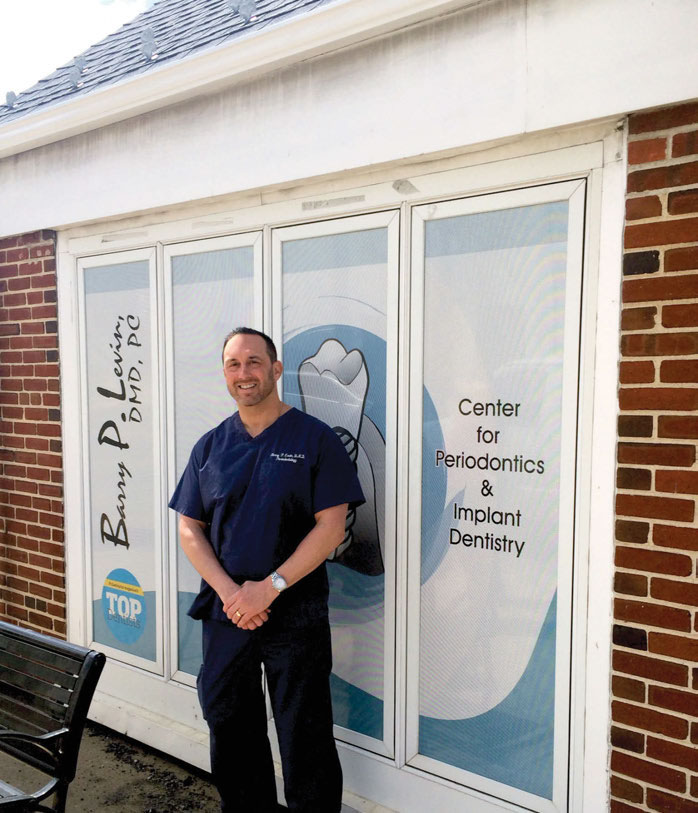 What can you tell us about your background?
What can you tell us about your background?
I attended Temple University School of Dentistry and completed my specialty training in periodontology and dental implant surgery at the University of Maryland in 1996. I have been in the same private practice for 19 years. I have also been teaching perio-dontal and implant surgery in the graduate periodontology program at the University of Pennsylvania (Penn) since 1996.
When did you become a specialist and why?
In college, I originally thought I would become an orthopedic surgeon. The knowledge and skills required to regenerate alveolar bone necessary to perform proper implant placement falls into a similar line of thought. The use of growth factors, bone grafts, membranes, and so on, makes this field dynamic and always challenging.
However, I finally decided to focus on dentistry, and I entered my perio residency immediately after graduating from dental school. I was always drawn to the surgical aspects of dentistry such as microbiology, pathology, and surgery. I was torn between oral maxillofacial surgery and periodontology. I felt periodontics gave me the best opportunity to be involved with my combined interests. Periodontitis is an infectious disease, often requiring antimicrobial and surgical therapy. The blend of keeping teeth via perio-dontal therapy and the regenerative nature of implant surgery was what sold me on perio-dontology as my career path.
Is your practice limited solely to implants, or do you practice other types of dentistry?
While implant therapy is a key part of my practice, as a board-certified periodontist, my first goal is to help patients maintain their natural dentition in a state of health, function, and comfort. I perform nonsurgical and surgical periodontal therapy. This includes resective procedures such as crown-
lengthening and osseous surgery. It also includes regenerative therapy such as combining growth factors with bone grafts and guided tissue regeneration (GTR) to regenerate lost attachment apparatus, and soft tissue augmentation for root coverage/esthetics regularly.
All of these procedures lend themselves directly to implant surgery. Often, hard and soft tissue augmentation is necessary either simultaneous or prior to implant placement. Having specialty training in periodontics makes this a seamless crossover. Having a strong background in regeneration makes adjunctive dental implant surgeries such as ridge augmentation, sinus grafting, and mucogingival procedures routine in my surgical specialty practice.
Why did you decide to focus on implant dentistry?
During dental school, I spent a lot of time in the graduate periodontics clinic. I may hold the unofficial record for the number of periodontal surgical assists for a dental student. I saw the implementation of the surgical principles of Drs. Brånemark and Schroeder and the evolution of implant dentistry from a hospital-based to an office-based discipline that was taking place in the early 1990s. The excitement this generated in the clinic was amazing. My periodontics training at Maryland under people such as Drs. Sylvan Feldman, Karl Zeren, Arnold Sindler, Paul Rosen, and John Bruno taught me how to make implant surgery an exciting and realistic career path. The meticulous attention to infection control, minimizing surgical trauma and technique was emphasized. Studying the literature and hearing pioneers such as Drs. Brånemark, Albrektsson, Buser, Nevins, Tarnow, and others present at Congresses inspired me to go beyond the didactic requirements of my graduate program, and I started reading textbooks pertaining to implant surgery, bone regeneration, and esthetics. This truly piqued my interest in making advanced surgical procedures a focus moving into private practice.
I also felt how rewarding it is to improve patients’ quality of life by alleviating their dependence on removable prostheses and helping to provide them with permanent, esthetic solutions that had affected their self-esteem for many years in certain cases.
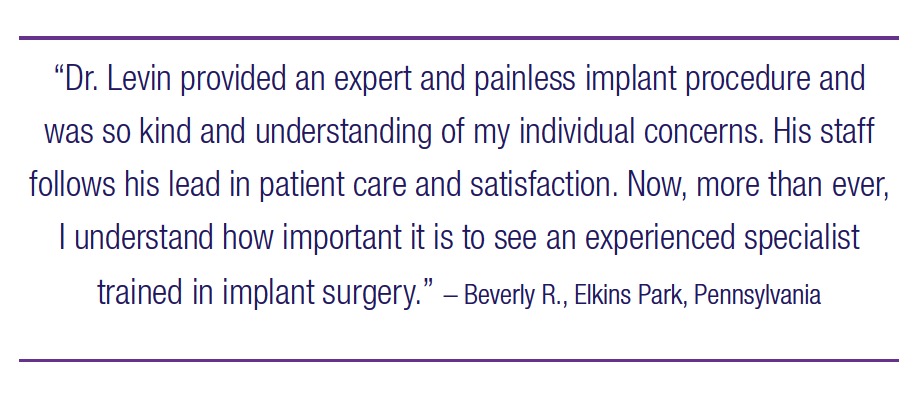 Do your patients come through referrals?
Do your patients come through referrals?
Yes. The majority of my patients are referred by restorative dentists. Having good relationships with restorative doctors is essential for the health of any surgical specialty practice and greatly impacts the overall positive experience and outcome for the patient. I am fortunate to work with some of the most talented restorative dentists in the Philadelphia area. We have created such a sense of familiarity with streamlined protocols that enhance treatment coordination and process. At the same time, however, more and more patients are being referred by other patients, or they discover my practice online. Overall patient experience and satisfaction is also so critical to the long-term success of a practice.
How long have you been practicing implant dentistry, and what systems do you use?
I have worked with over 10 different implant systems over the 19 years I’ve been in practice, between working in the office and treating patients at Penn. My experience has led me to the point where I felt I needed one system that provided optimal surgical and restorative options, but with science backing all aspects. This is why I currently work exclusively with the ASTRA TECH Implant System™ EV by DENTSPLY Implants. Supporting the ASTRA TECH Implant System is a decades-long history of science and success, which is critical for me as a clinician looking to provide the most reliable and optimal outcomes for my patients.
What training have you undertaken?
My periodontics specialty program provided me with years of formal implant training. Periodontics teaches the art of diagnosis, treatment planning, surgical technique, and wound healing. The importance of the literature, both classic and current, was a major point of emphasis. Supporting clinical decisions with sound scientific evidence is mandatory. I have continued my training by attending and teaching both didactic and hands-on courses at major Congresses such as the AAP, AO, EuroPerio, etc. Also, teaching at Penn alongside master clinicians like Drs. Louis Rose, Edwin Rosenberg, Arnold Weisgold, and others, I’ve collaborated and learned so much from sharing experiences with these true experts.
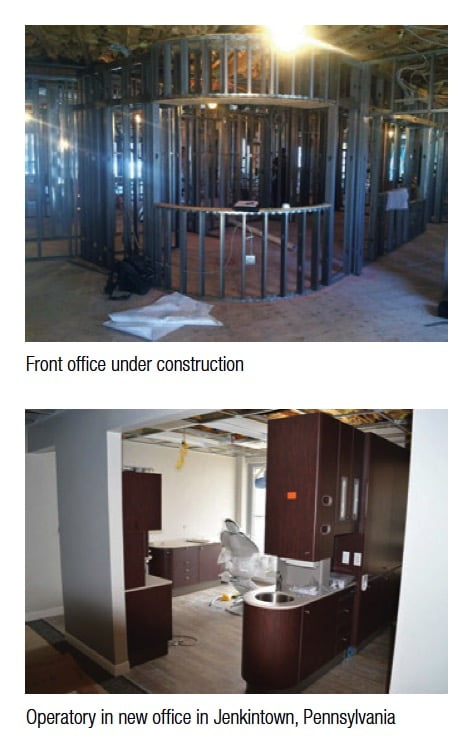 Who has inspired you?
Who has inspired you?
Personally, I grew up with a father who built a business from the ground up. He went to the Wharton School of Business at night for years while building a career and supporting his family. His work ethic was evident 7 days a week, and understanding that there is no substitute for hard work has rubbed off on me.
Professionally, I had the honor of being one of the four residents in Dr. Gerald Bowers’ last class before his retirement. Learning periodontology from one of the true legends was a privilege I cannot express in words. I went to Maryland because the program was renowned for having the regenerative emphasis on periodontal treatment. Dr. Bowers engrained in us the philosophy that all treatment must be based in sound science from the literature. Becoming board certified was a given, and I was proud to receive my acceptance as a Diplomate from Dr. Bowers.
I was also inspired by Dr. Emanuel Tress. “Manny” brought me into his long-established practice right out of my residency. Not only did he give me an opportunity to build my own identity, but he taught me so many aspects about how to communicate with referring dentists, patients, and colleagues. I will be forever grateful for the opportunity Manny has given me.
Teaching at Penn, I have not only become colleagues and friends with some of the “all stars” of periodontics and implant dentistry, but in subtle ways, I’ve been mentored by legends in our field. The knowledge these men have shared with me, both directly and indirectly, has been invaluable. Appreciating the path modern implantology has followed serves as a blueprint for the proper future direction of our field.
 What is the most satisfying aspect of your practice?
What is the most satisfying aspect of your practice?
The most satisfying aspect of my specialty practice has to be the gratitude that patients show after their treatment is completed. When people come to you despondent about their oral health and appearance, and your therapy truly changes their attitude and outlook, you cannot help but feel tremendous satisfaction.
Professionally what are you most proud of?
I would have to say that I am most proud that I have built my practice “the right way.” There is immense pressure to take shortcuts at every turn in private practice. Doing procedures people are not adequately trained to perform, using inferior, unproven products sold at discount prices, not basing treatment on sound science, etc., is everywhere. I am most proud that I stay within my specialty scope of practice, use only premium, solidly-researched materials, and read multiple journals monthly. The treatment performed in my office is always based on this scientific approach. Shortcuts are simply not an option.
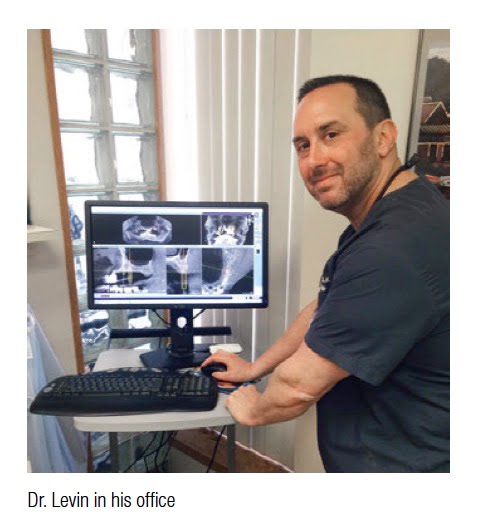 What do you think is unique about your practice?
What do you think is unique about your practice?
I think my practice is unique because I bring an academic approach to a private practice. I serve as an editorial board member of several peer-reviewed journals, including being the Implant Section Editor for Compendium. I regularly publish clinical research and case reports and lecture nationally and internationally. I bring this scientific approach to my patients each and every day. I spend the majority of my time in private practice. Relating proven treatment modalities to real-world patients is something I am most proud of. Because I present regularly and document procedures, I look at every procedure as if I am sitting in an auditorium, looking at my surgeries on a large screen. This is a compass for staying the course and trying to perform to the best of my ability.
Also, with a brand-new, state-of-the-art office, we can offer cutting-edge technology while still maintaining the over 50-year tradition of patient care and a family atmosphere of the practice.
What has been your biggest challenge?
I think the biggest challenge is making the public aware of why they should seek a specialist for implant care. Weekend courses, mini-residencies, and lack of regulations blur the lines for prospective patients. It’s very easy for under- or untrained dentists to appear qualified to perform care best rendered in a specialist’s practice. This can lead to less than ideal outcomes, and patients begin to fear implant therapy because they or someone they know has had bad experiences with implants. When a true team comprised of surgeon, restorative dentist, and lab technician work together, there can be success for everyone; and even more importantly, results can be predictable and optimal for the patient. This is the biggest challenge we face moving forward.
What would you have been if you hadn’t become a dentist?
If I did not become a periodontist specializing in implants, I would probably be one of the three Levin Brothers in the family business. The fact that I chose dentistry as a career is good news for my two younger brothers, who are the two happiest people because of this. The forklift business is also better off for my choice, I’m sure!
What is the future of implants and dentistry?
I think the future of implant dentistry is exciting, yet needs to be approached with caution. The vast amount of technology drives all fields to an extent. The emergence of three-dimensional printing, CAD/CAM technologies, and tissue engineering will have major footprints on our field. The dentists 20 years from now may look at our patients’ radiographs and wonder what these metal screws are. The challenge we all face is knowing when certain technologies are safe, predictable, and proven scientifically. It is up to the peer-reviewed journals, the researchers, and dental schools to exercise patience before touting biomaterials, techniques, and technologies. With that word of caution, I think the things we will accomplish in the future will be great! Regeneration of lost hard and soft tissue will always be at the forefront of my practice. Simply accomplishing osseointegration is no longer an acceptable endpoint. Inconspicuously blending dental implants and restorations within the partially edentulous patient’s dentition with long-term stability is our goal. For edentulous patients, giving them back a fully functional and esthetic dentition should always remain our focus.
This is also one of the reasons that I am currently just finishing the construction on a brand-new office. The new office is designed around the integration of state-of-the-art technology and process efficiency for the highest level of patient comfort and treatment outcomes.
What are your top tips for maintaining a successful specialty practice?
I think staying current with the science is crucial. For one to be a successful specialist, he/she must offer more than a “megadontist” can provide. We must use our specialty training as a platform to start “ahead of the curve.” Our background in surgery, wound healing, and science gives us this head start.
Keeping open lines of communication with all members of the team is critical. The surgeon must understand the unique challenges our restorative colleagues face and how they manage specific situations. Being familiar with CAD/CAM technology, digital impression systems, and occlusion makes this communication most productive. If each team member understands and respects the other’s role, optimal treatment prevails.
It is also very important for the specialist to maintain a modern, clean, and comfortable environment for patients. People need to feel that they are being cared for at an extremely high level when they see a specialist, with patient satisfaction being one of the best marketing strategies you can have.
What advice would you give to a budding implant dentist?
Training is key. What a dental school curriculum can offer will always be limited. There is simply too much critical information and experience to serve as the “minimal requirements” for graduation. It is up to individuals to find their passion and pursue mastery appropriately. In my opinion, an ADA-certified residency is the best way to receive formal education in a particular area, without the bias of manufacturer-provided, private courses and in an adequate length of time to teach fundamental principles and learn the literature. After completing a graduate program, it is up to these individuals to continue their education for the duration of their careers. There are many opportunities to continue learning at major Congresses and smaller continuing education courses. Reading peer-reviewed journals and collaborating with other doctors in person and online strengthen one’s knowledge.
Tell us some details about your practice.
My private practice has recently opened a new location in Jenkintown, Pennsylvania, with eight operatories, three designated for hygiene. Two operatories are set up for evaluations and nonsurgical procedures, and three operatories are equipped for surgical treatment, including IV sedation, administered by a physician. We have had digital radiography for 10 years and in-house CBCT for 8 years. This new facility has a state-of-the-art sterilization center and private consultation room for comfortable explanations and Q & A appointments for our patients.
My office manager, Jennifer Scamuffa, runs the practice. She is a member of the American Association of Dental Office Managers and manages the daily business of the practice as well as performs patient consultations.
The team consists of two dental hygienists, three surgical assistants, and two front desk team members. We have little to no turnover, and I am the third-longest tenured member of the team. Our patients truly appreciate the same faces they see at every visit and share recipes, borrow books, and share pictures of the children and grandchildren with our crew. Relationships are very important in our practice. I am extremely proud to be able to provide state-of-the science specialty care in this brand-new facility while carrying over a half-century tradition of patient comfort and friendships to our new office.
What are your hobbies, and what do you do in your spare time?
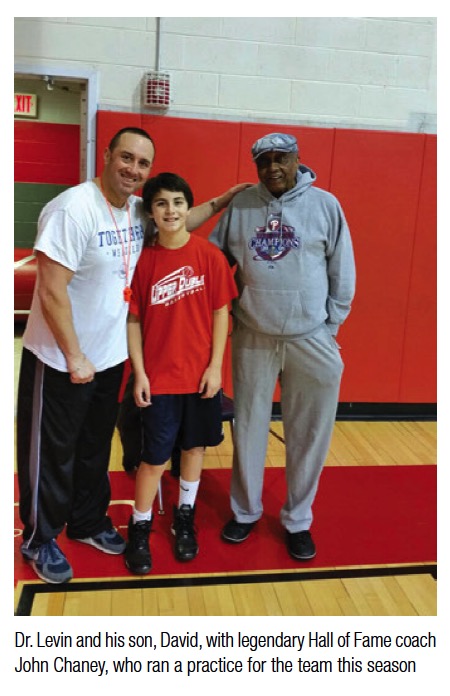 My hobbies include continuing a 30-plus year weightlifting habit. My youngest son has begun training with me, and this has re-invigorated my passion for fitness. I also help coach his travel basketball team with my wife. She played basketball in high school, and I am really enjoying the role of mentor and coach of 10 great 5th grade boys.
My hobbies include continuing a 30-plus year weightlifting habit. My youngest son has begun training with me, and this has re-invigorated my passion for fitness. I also help coach his travel basketball team with my wife. She played basketball in high school, and I am really enjoying the role of mentor and coach of 10 great 5th grade boys.
All three of my kids lead pretty active lives. My 16-year-old daughter and 14-year-old son are both active in theater and music, and I really enjoy seeing them perform. Running to soccer and basketball games, school plays, and concerts fills time pretty well during the academic year.
I have always loved the Jersey shore (not the one on TV). We try to spend as much family time as possible in the summer at the beach. I have always wanted my kids to have that love of the shore that my parents instilled in me.
Stay Relevant With Implant Practice US
Join our email list for CE courses and webinars, articles and mores




